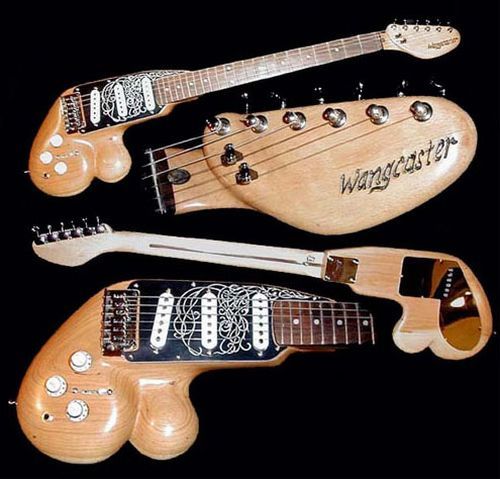|
|
Unusual Guitar
|
• Fretboard
Also called the fingerboard, the fretboard is a piece of wood embedded with metal frets that comprises the top of the neck. It is flat on classical guitars and slightly curved crosswise on acoustic and electric guitars. The curvature of the fretboard is measured by the fretboard radius, which is the radius of a hypothetical circle of which the fretboard's surface constitutes a segment. The smaller the fretboard radius, the more noticeably curved the fretboard is. Most modern guitars feature a 12" neck radius, while older guitars from the 1960s and 1970s usually feature a 6-8" neck radius. Pinching a string against the fretboard effectively shortens the vibrating length of the string, producing a higher pitch. Fretboards are most commonly made of rosewood, ebony, maple, and sometimes manufactured or composite materials such as HPL or resin.
• Frets
Frets are metal strips (usually nickel alloy or stainless steel) embedded along the fretboard and located at exact points that divide the scale length in accordance with a specific mathematical formula. Pressing a string against a fret determines the strings' vibrating length and therefore its resultant pitch. The pitch of each consecutive fret is defined at a half-step interval on the chromatic scale. Standard classical guitars have 19 frets and electric guitars between 21 to 24 frets (though Caparison Guitars issue guitars with as many as 27 frets).
|
|









